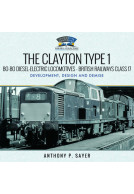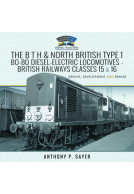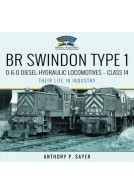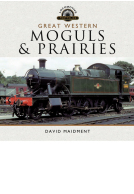North Eastern Electric Stock 1904–2020 (Hardback)
Its Design and Development
Imprint: Pen & Sword Transport
Series: Locomotive Portfolios: Diesel and Electric
Pages: 168
ISBN: 9781526740342
Published: 20th May 2021
(click here for international delivery rates)
Order within the next 10 hours, 10 minutes to get your order processed the next working day!
Need a currency converter? Check XE.com for live rates
| Other formats available - Buy the Hardback and get the eBook for £1.99! | Price |
|---|---|
| North Eastern Electric Stock 1904–2020 eBook (23.5 MB) Add to Basket | £9.98 |
The north east of England was the cradle of Britain's railways in the 19th Century. It was here George and Robert Stephenson would shape the steam locomotive. Then in the early 20th Century a second transport revolution took place around Newcastle when the suburban lines from the city to the coast were electrified in response to competition from the electric trams. What was created became the blueprint for modern day commuting. This book tells the story behind the creation of that network, the trains that served it. The narrative goes through the success and expansion years and ultimately the troubles that led to its demise. Our story comes full circle with the creation of the Tyne & Wear Metro, a ground breaking transport system that, like the electrified lines nearly 80 years earlier, set a new standard for suburban rail that would be the inspiration for schemes in many other parts of the country.
A review of the Tyne and Wear Metro cars and their predecessor electric multiple-units and locomotives, which provided both passenger and freight services in the area around Newcastle-upon-Tyne.
Light Rail Transit Association
In summary, this book is a good overall appreciation of the development of the extensive electric network around Tyneside.
Rail Advert
Read the Full review here
Featured in
Rail Express Magazine - October 2021
This book covers the history of electrified railways in the North East, one which goes back to the early twentieth century and saw a resurgence with the Tyne & Wear Metro system in the 1980s. With a generic introductory two chapters about the development of the North East, its industry and railways, and the North Eastern Railway in particular, it then goes on to describe in more detail the stock used by the NER, LNER, British Railways and then the Metro system. It is more of an overview of the various types of stock that have been used in the North East and a chapter on the other NER electric locomotives built, with a lengthy 14-page appendix on the preserved British Railways Tyneside electric unit owned by the author. Well-illustrated, certainly in terms of the coverage of the North Eastern Railway.
Backtrack Magazine
"If history, understanding and detail of the Northern Eastern Electric railways is what you are looking for, this book is for you."
Hexham Local History Society (Hexham Historian) Newsletter - Autumn 21
"Those whose interests are broader than conventional tramways will find much in this new publication to please them."
Tramway Review
Graeme Gleaves’ book is a thoroughly competent and readable account of Tyneside electrification through all its stages, and is illustrated with an impressive selection of black and white and colour views which will bring back memories for some and serve as a comprehensive history for those unfamiliar with the area’s railways.
West Somerset Railway Association
Highly recommended.
"The author has an engaging style, covers the social and economic factors in the changing fortunes of the network thoroughly and has an eye for entertaining detail."
Railway and Canal Historical Society
Another book in Pen & Sword's Locomotive Portfolios: Diesel & Electric series, this volume takes a new look at the North Eastern electric systems around Tyneside and Newcastle and the stock used. The author, who is a part of the team responsible for saving the only remaining Tyneside 2EPB unit (currently under restoration at the Battlefield Line, Shackerstone), looks at the history of railways in the area and the start of the electrification schemes by the North Eastern Railway in 1904, through LNER ownership and decline under BR and eventual reversion to diesel traction on the Tyneside lines in the 1960s. Their revival as part of the Tyneside Metro concludes the history in a more positive note. Also included is the story behind the preserved unit and its outlook for the future. The book looks in detail at the various aspects of the lines and stock introduced over the time period covered. A good selecion of well reproduced photographs compliments the text. If interested in the Tyneside electrics you will find this book a valuable resource and reference. Recommended.
Diesel and Electric Modellers United
At the moment, we are being somewhat spoiled with an excellent range of well-written and attractively presented books. This is another volume that I could happily recommend for anyone with an interest in the development of electric railways, traction and rolling stock.
Railways Illustrated, November 2021
This book is excellently presented and produced to Pen & Sword's usual high standard
Rail Express
"The quality of reproduction is excellent throughout and the book is well worth a read. Recommended."
LNER Society
An interesting account of a highly successful system showing the North Eastern Railway at its progressive best.
Roger Backhouse, York Model Engineers - Newsletter, July 2021
Referenced in ‘Added reading’ part of Five Electric Generation article
Railways Illustrated, April 2021
A good source of historic information. It gives a good account of electric railway’s in the NE
James Simmonds
About Graeme Gleaves
Graeme Gleaves was born in Kent in a house that backed onto the Main line between London and the coast and had trains passing by every few minutes. It was only natural that he should develop a keen interest in railways, then join the railway industry from school and eventually become involved in writing books on trains. He was the founder of the Suburban Electric Railway Association and the Electric Railway Museum and remains very involved in the preservation of British electric trains to this day.






















